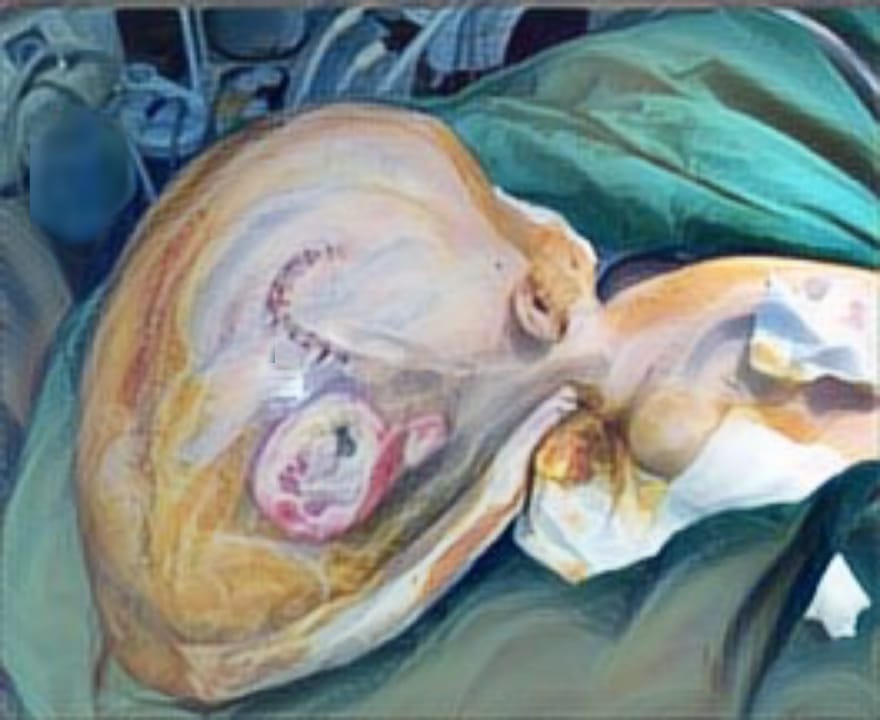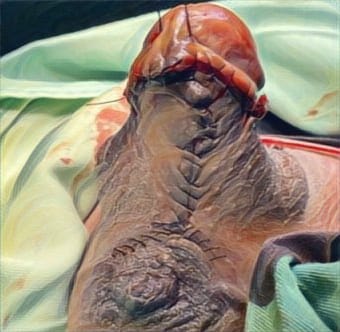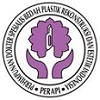SURGICAL TECHNIQUE FOR COMPLEX SYNDACTYLY IN APERT SYNDROME: A SERIAL CASE
Downloads
Highlights:
- Complex syndactyly in Apert syndrome, particularly when complicated with synonychia and synostosis, poses a significant surgical challenge.
- Successful surgical techniques for Apert syndrome syndactyly are crucial to achieving these goals.
Abstract:
Introduction: Complex syndactyly in Apert syndrome, especially complicated with synonychia and synostosis, is a surgical challenge. The incidence of Apert Syndrome is reported to be approximately 1 per 100,000 to 160,000 live births and its incidence in Indonesia is not yet known. It is practically symmetrical causing significant dysfunction and infection if not treated properly. The goals in the treatment are the separation of independent digits without disturbing function and growth, the creation of a lined commissure, the provision of skin cover for the denuded nail edge and exposed bone, and to creation of aesthetically pleasing individual fingertips with proper nails, nail folds, and adequate pulp fullness. This is due to the unreliability of the vascular branching pattern to the digits.
Case Illustration: In this serial case, we reported 5 cases of Apert syndrome. We described the clinical findings, incision design, immediate and post-surgery follow-ups.
Discussion: In this case, we combined dorsal rectangular flap and palmar triangular flap to make a new web space, Buck Gramcko pulp flap for the nail fold reconstruction, and full thickness skin graft w was taken from the groin to cover the raw areas. Absorbable 5.0 simple interrupted sutures were used in each patient. The results were uneventful, with satisfying function and aesthetic appearance.
Conclusion: Choosing the best surgical technique for releasing the web space in syndactyly depends on the patient's condition and the plastic surgeon's decision was needed. In 5 patients, up there was no meaningful complication attained from the postoperative result.
Thorne. C. Grabb and Smith's Plastic Surgery 7th edition. New York. 890-899.
Mathes S J. Plastic Surgery 2nd edition. San Fransisco California., Vol VIII.,139-174
Wolfe S W. 2011 Green's Operative Hand Surgery. 7th edition. Elsevier. New York. 1217-1230.
Fadda M T, et all. Treatment timing and multidisciplinary approach in Apert Syndrome. Annali di Stomatologia 2015. VI(2): 58-63.
Harvey I, et all. The Apert Hand – Angiographic Planning of a Single- Stage, 5-Digit Release for All Classes of Deformity. J Hand Surg.2012.37A: 152-158.
Journeau P, et all. Syndactyly in Apert syndrome Utility of a prognostic classification. Ann Hand Surg.1999.18(1):13-19.
Adrian E, Webbed finger. Baylor University Medical Center Proceedings 2005.18:26-37.
Braun T L, Trost J G, Pederson W C. Syndactyly Release. Semin Plast Surg 2016.30:162-170.
Kvernmo H D. Treatment of Congenital Syndactyly of the Fingers. Tidsskr Nor Legeforen nr. 15, 2013: 113:1591-5.
Dao K D., et all. Surgical Treatment of Congenital Syndactyly of the Hand. J Am Acad Orthop Surg 2004.12:39-48.
Jose R M, et all. Syndactyly Correction: an Aesthetic Reconstruction. The Journal of Hand Surgery (European Volume, 2010.35 E:6:446-450.
Koca, T. T. Apert syndrome: A case report and review of the literature. Northern clinics of Istanbul, 2016:3(2):135.
Wenger TL, Hing AV, Evans KN. Apert Syndrome. In: GeneReviews®. University of Washington, Seattle, Seattle (WA); 1993. PMID: 31145570.
Siminel, M. A., et al. Apert syndrome-clinical case. Rom J Morphol Embryol, 2017.58(1):277-280.
Fearon, J. A. Treatment of the hands and feet in Apert syndrome: an evolution in management. Plastic and reconstructive surgery, 2003.112(1):1-12.
Copyright (c) 2019 Williams Mesang, Agus Santoso Budi, Magda Rosalina Hutagalung

This work is licensed under a Creative Commons Attribution-ShareAlike 4.0 International License.
JURNAL REKONSTRUKSI DAN ESTETIK by Unair is licensed under a Creative Commons Attribution-ShareAlike 4.0 International License.
- The journal allows the author to hold copyright of the article without restriction
- The journal allows the author(s) to retain publishing rights without restrictions.
- The legal formal aspect of journal publication accessbility refers to Creative Commons Attribution Share-Alike (CC BY-SA)



















